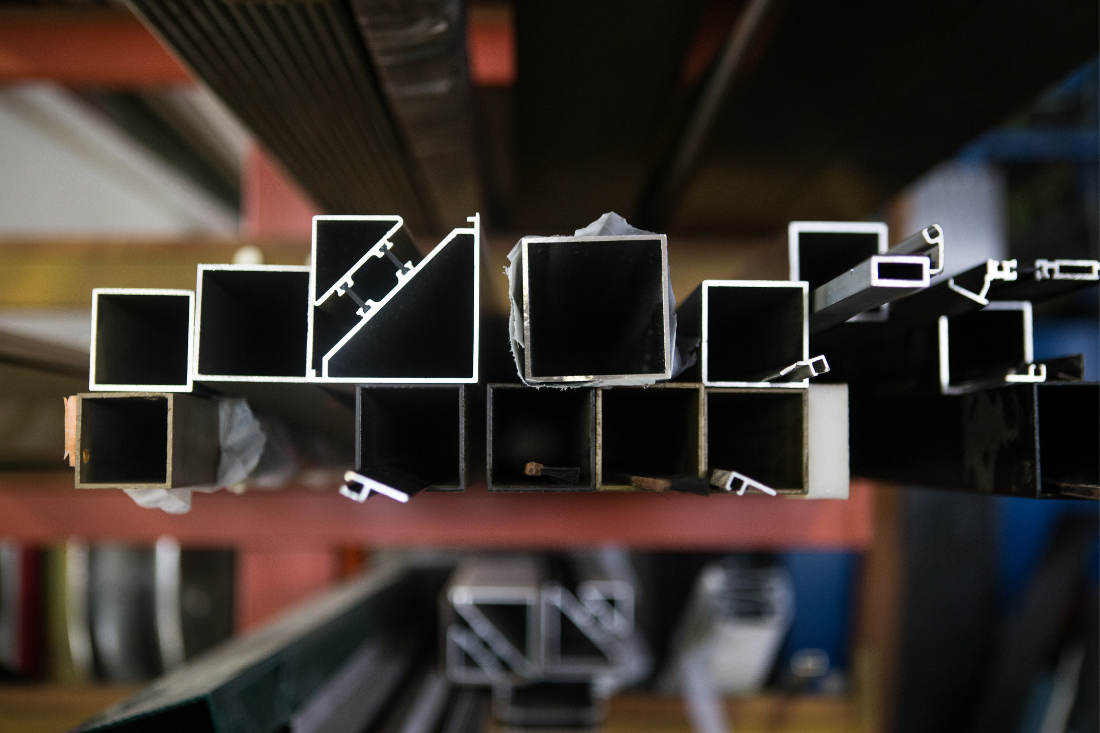Aluminum Profile Types and Usage Areas
Discover the functional and aesthetic solutions provided by aluminum profiles in sectors such as construction, automotive and furniture; add value to your projects with Kenan Metal quality!

Aluminum stands out as a preferred material in many industries with its durability, lightness and formable structure. Thanks to these features, aluminum profiles provide a wide range of usage areas by offering solutions for different needs. Used in construction, automotive, furniture and many other sectors, aluminum profiles combine both aesthetic and functional advantages.
Aluminum profiles stand out with their energy efficiency, durability and environmentally friendly features by offering both functional and aesthetic solutions for many sectors. Kenan Metal offers comprehensive solutions to its customers in sectors such as construction, automotive and furniture with aluminum profiles produced in accordance with high quality standards. Thanks to the diversity and wide range of uses of aluminum profiles, Kenan Metal continues to play a leading role in the sector.
Make your projects more robust and efficient with the quality and durable products offered by Kenan Metal in your aluminum profile solutions!
Aluminum Profile Types
Produced to suit the requirements of different projects, aluminum profiles vary in their design and function. Here are the most common types of aluminum profiles:
1. T Profiles
T profiles are ideal for versatile connections with their letter T-shaped structure. These profiles are often preferred in modular systems, assembly projects and support structures. With the strength it provides, it has the capacity to support heavy loads, which makes it widely used in sectors such as construction and automotive.
2. Sigma Profiles
Sigma profiles perfectly balance lightness and strength with their S-shaped structure. These profiles are generally used in projects that require durability and flexibility. They are especially preferred in the automotive and electronics sectors to increase resistance against vibrations and impacts. Sigma profiles also play an important role in strengthening structural supports.
3. Bar Profiles
Bar profiles are flat or round shaped aluminum profile types produced in various diameters and lengths. Despite its simple structure, it is very durable and thanks to its light weight, it is used for reinforcement in the construction industry and support structures in the automotive industry. Bar profiles provide an aesthetic appearance in interior designs, railings and furniture accessories with their versatile use.
4. Box Profiles
Box profiles are square or rectangular and have a closed structure. These profiles are used in heavy load-bearing structural elements with their high-strength structure. Box profiles, which are an ideal option for building elements such as roofs and columns in the construction sector, also offer aesthetics and durability in the furniture and decoration sector.
5. L Profiles
L profiles are used for corner supports with their L-shaped angled structure. The flexibility provided by L profiles in modular systems, especially in corner joints and supports, provides a great advantage in construction and interior design applications. It also increases the robustness of building systems by providing ease of assembly.
6. U Profiles
U profiles are used in areas such as cable ducts, cladding and interior decoration with their open design in the shape of the letter U. It offers an aesthetic appearance in functional applications such as hiding cables and surface coverings. It is especially preferred in frame systems in the furniture industry.
Usage Areas of Aluminum Profiles
Different types of aluminum profiles find a wide range of uses in many sectors. Here are the main sectors where aluminum profiles are used:
1. Construction Sector
Aluminum profiles offer both structural and decorative solutions in the construction industry. Aluminum profiles, which are used in many areas from roof systems to facade claddings in construction projects, stand out with their durability and lightness advantage. These profiles, especially used in the roof systems of high-rise buildings, increase building safety by reducing the weight load.
- Window and Door Systems: Heat insulated aluminum profiles are preferred in window and door systems to increase energy efficiency.
- Facade Cladding: Aluminum profiles provide an aesthetic appearance in modern facade designs and are long-lasting thanks to their durability.
- Roof and Stair Systems: Aluminum profiles are preferred in roof and stair systems with their light and robust structures in construction projects.
2. Automotive Sector
Aluminum profiles are frequently used in the automotive industry to reduce the weight of vehicles and increase energy efficiency. Thanks to their lightweight structure, these profiles reduce fuel consumption and minimize the environmental impact of vehicles.
- Engine Parts: Aluminum profiles are used in engine components and chassis structures to increase durability.
- Bodywork: Aluminum profiles provide lightness and durability in the body and frame structures of vehicles.
- Electric Vehicles: Aluminum profiles are preferred to increase the range especially in electric vehicles.
3. Furniture Sector
Decorative aluminum profiles are widely used in the furniture industry to provide aesthetic appearance and add durability to furniture. Offering ease of installation thanks to their lightweight structure, aluminum profiles provide a modern and stylish look in furniture design.
- Frames and Edges: Aluminum profiles used in furniture frames and edges offer both aesthetics and durability.
- Lighting Systems: Aluminum profiles are preferred for decorative purposes in lighting equipment.
- Table and Cabinet Systems: Aluminum profiles provide lightness and durability in table and cabinet structures.
4. Electronic and Electrical Equipment
Aluminum profiles are of great importance in the electronics industry with their heat dissipation properties. Thanks to its ability to dissipate heat quickly, it enables electronic devices to operate more efficiently.
- Coolers: Aluminum profiles are used in the cooling systems of electronic devices and extend the life of the devices.
- Frame Structures: Aluminum profiles used in television and monitor frames provide both lightness and durability.
5. Solar Energy Systems
Aluminum profiles form the durable frames of solar panels. Thanks to their durable structure, aluminum profiles contribute to the longevity of solar panels and provide support for an environmentally friendly energy source.

